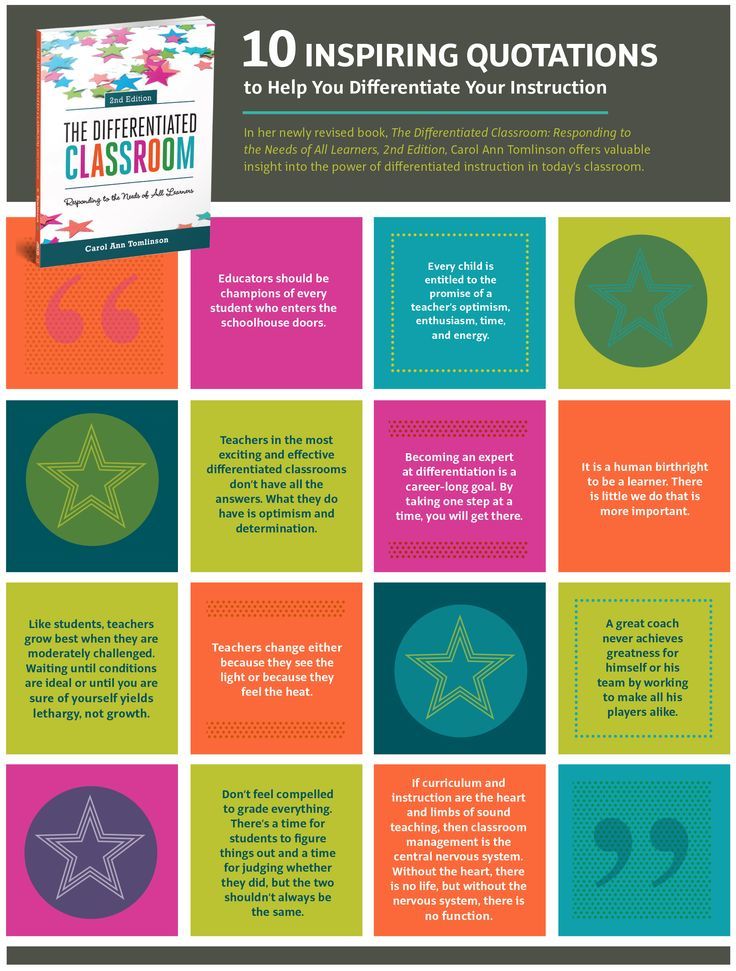When You Have to Create Differentiated Instruction Lesson Plans
One of the popular ideas making the rounds in education is differentiated instruction. Your principal may have even told you that you need to start submitting differentiated instruction lesson plans and then moved on to the next topic on the agenda for that in service day. I remember being introduced to the concept a few years ago at a rather unusual in-service meeting. The entire library had been converted to look like a cafe. I believe there were even signs on the door welcoming us to the Differentiation Cafe. Red and white checkered tablecloths covered the worn wooden tables . Upon entering the cafe, each teacher was give a place card that assigned them to a particular table. I guess it shouldn’t have been a surprise that I was seated with people who taught different grade levels than I did. Hey, at least there were bowls of candy on the tables. It turns out that my in-service meeting was being differentiated. What followed was a big bundle of tips for creating and implementing differentiated instruction lesson plans.
Inspiration for Differentiation

Find more education infographics on e-Learning Infographics
Teaching Every Student
Differentiated instruction lesson plans are probably coming to a school district near you, if they aren’t there already. You’ve got a room full of diverse learners and you need to address their strengths and weaknesses.
An Example of Differentiation in Action
What is Differentiated Instruction?
There are big changes happening in education today. Most of what today’s parents might remember has gone the way of the dinosaur. In general, it is no longer acceptable to stand in front of a classroom full of students and simply teach and explain material. Today’s learning environment requires a much more individualized and hands on approach aimed at personalizing each child’s educational experience based on their strengths and weaknesses.
Differentiated instruction lesson plans are written with the goal of assessing the needs of each child in the classroom and then setting down a plan of action that will allow children of every ability level to reach the same goal in their classroom. The idea of differentiating instruction can be intimidating for teachers who might have become set in their ways after decades of teaching service. Of course, many teachers have been differentiating for years without knowing that there was a label that could be applied to the technique. They simply figured that they were teaching their students based on what they knew and what they each still needed to learn. The easiest way to get there was to adapt lessons to fit how their students learned.
Hands-on Help You Can Use Now for Differentiating Instruction
Differentiated Instruction 2-Book Set: The Differentiated Instruction Made Practical: Engaging
Differentiated Instruction Made Practical: Engaging
One Size Does Not Fit All
In differentiation, teachers assess each student’s starting point, but they also take a close look at how each child best learns and expresses what has been learned through the lessons being taught. A variety of learning activities are available for students to choose from in the classroom.
Making the Change to Differentiated Instruction
Districts making a wholesale switch to differentiation should do what they can to make helpful resources available to both teachers and students. There needs to be an understanding that the process of change is not an instant one. Teachers must be provided training in each area of differentiation. This includes knowing the best methods of assessing students’ starting points, how to most effectively present new content to a very diverse audience of learners, and how to fairly assess each students progress after a unit of study has been completed.
The current atmosphere in education seems to be leaning toward each child having a learning experience aimed at his or her needs. Teachers will have to know their students extremely well to be able to address each child’s educational needs. It is a learning process for both teacher and student, and hopefully it will bring benefits in the end.
The Pendulum Swings in Education
I remember a couple of veteran teachers telling me that there wasn’t anything new in education. This was back when I first started teaching. They said that things come and go with different names, but that it was usually the same re-packaged approaches coming back, over and over. In education, it seems that there is a never ending quest to find the best and most effective ways to teach students the information and concepts they will need to succeed in life. This can be quite a challenging task for a variety of reasons. With each new class there is a brand new spectrum of considerations to take into account. Students bring a lot of background with them. In the same classroom, you can have children who have been read to since they were literally in the womb, sitting next to children who are barely acknowledged by their parents. Although it can be difficult, teachers must address the needs of both students to ensure that they receive an education. This is basically the same thing that teachers dealt with back in the days of the one room school house. A very diverse group of learners that all need to be taught.
Different Strokes for Different Folks
Parental involvement is a great benefit for students, but unfortunately, it cannot always be counted on to be there. Teachers need to take variances like this into account when addressing their classes. They also must consider factors such as the learning styles of individual students. An inventory taken early in the school year can help to determine which students learn best by seeing, hearing or hands on methods.
When possible, teachers do their best to tailor their lessons to these learning preferences. Teachers sometimes struggle coming up with differentiated instruction lesson plans that are appropriate to all of the learning styles in their classrooms. There are number of tools and strategies that can be applied to make learning happen across a wide spectrum of student abilities.
An Example of a Differentiated Approach
One popular technique that is sometime used is guided reading. Guided reading strategies bring the teacher together with small groups within the classroom. While the teacher will provide an introduction to the text, students are expected to use the skills they have already learned to figure out word meanings and possibly concepts they are not yet familiar with as they read. This can be a very effective method for helping young readers, but it is easier to accomplish if there is a second co-teacher in the room. The teacher is able to immediately recognize and address and concerns as students work on reading and understanding books that should be appropriate to their abilities.
There are a number of approaches, strategies and techniques involved in successful differentiation. Addressing the needs of a classroom full of students can be quite a challenge. Integrating some of the more basic techniques for differentiating instruction can take practice, but in the end can help teachers to give each student the help and direction that they need.
Check out the big Instructional Strategies List for Teachers.









